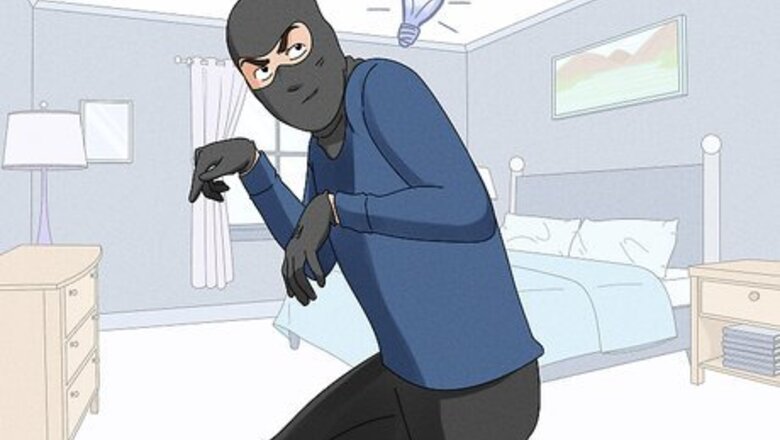
views
Thinking Like a House Burglar
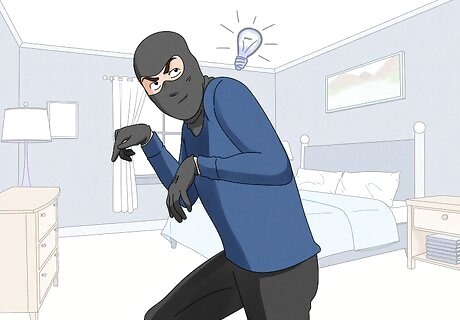
Why does thinking like a burglar help? Knowing how a burglar thinks or what they’re looking for can help you protect your home and deter burglars. If you look at your home through a burglar’s eyes, you can identify weak spots and fix them. Burglars will often watch your home for hours or days to figure out weak spots and learn your routine.
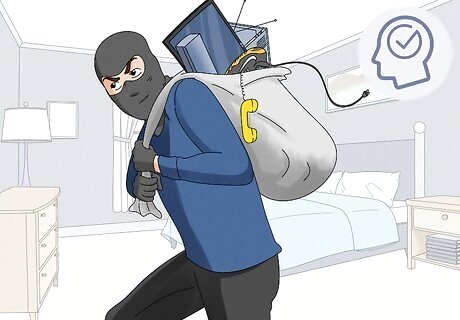
What are the burglar’s main motivations? They want to get as much stuff as possible in the least amount of time. The more difficult you can make that, the more you’ll deter burglars. Burglaries are often crimes of opportunity.
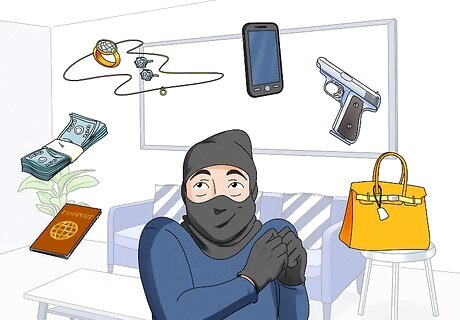
What is valuable in a burglar’s eyes? Small valuables get targeted the most since they’re easy to transport. Money, jewelry, small electronics, guns, designer bags, and passports are the most likely things a burglar will go after. Things that can fit in a pocket or the palm of your hand are the most likely to get swiped.
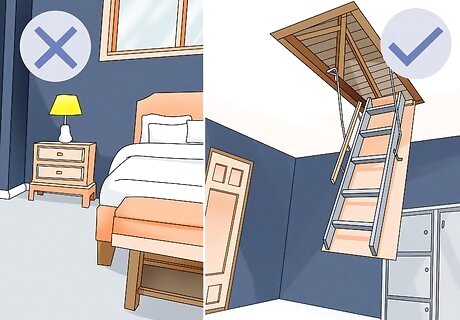
Where should I not hide my valuables? Burglars are most likely to hit the master bedroom first. Try to keep most of your valuables out of this area unless they’re super well hidden (and even then, it still might be a risk). In contrast, if you have an attic or a loft, burglars are very unlikely to take the time to explore those areas. Cliché hiding spots, like under the mattress or in the sock drawer, are also pretty likely to be checked.
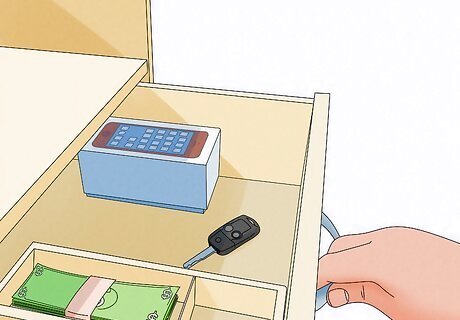
Should I leave decoy items? If you can sacrifice something less valuable to save your other valuables, then yes. Leaving a small amount of cash or a cheap (but still valuable) piece of jewelry out in the open can trick burglars into thinking they’ve found everything, even if your real valuables are stashed somewhere else. Burglars will often keep looking until they find something. If you don’t want burglars to tear your home apart, it might be helpful to put out an item they can find quickly without destroying a ton of your stuff.
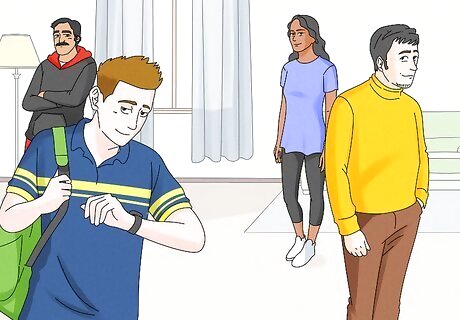
Are burglars always strangers? Not necessarily. Unfortunately, people you know (or even people who live in your home) can steal things from you, too. If you’re concerned about that, you may have to make more of an effort to hide your valuables from your family members instead of just random strangers. Petty theft is most common in children and teens, but it can happen at any age.
Hollowing Out Items
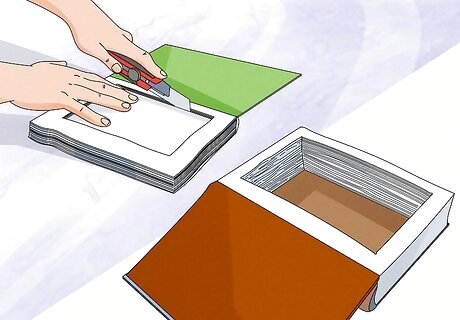
Cut book pages out of a book to hide small items and cash. Grab a hardcover book and cut a square through all of the pages, leaving the covers intact. Slip your valuables into the hollow pages, then close the cover to keep them in place. Slide the book back onto your bookshelf for an easy hiding spot. The downside of this method is that you have to destroy a book. Try getting a cheap book from a thrift store that you don’t mind ripping up for this method. Make sure your bookshelf is full so that your hollow book doesn’t stand out. If you only have one book in your home, a burglar is probably going to check it.
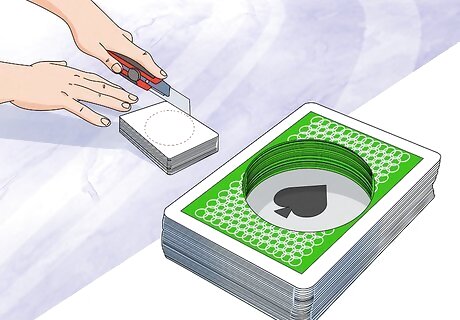
Hollow a deck of cards for super small items. Use a box cutter to cut a hollow square into a deck of cards, but leave at least two cards intact. Slide your diamonds or cash inside of the cards, then put the whole cards on the front and back of the deck. Keep the cards in their box for extra camouflage. Make sure you don’t accidentally give your deck of cards away! Hiding valuables in an item like this always comes with the risk of you forgetting or getting rid of it.
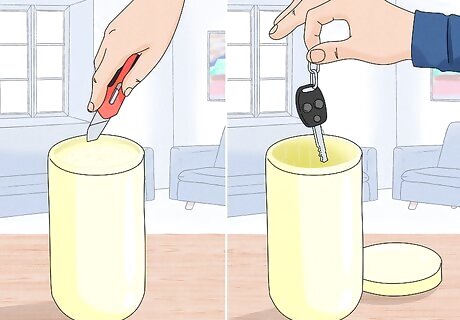
Set up a fake candle to hold your valuables in plain sight. Grab a large candle and cut off the top 1 in (2.5 cm) or so. Use a box cutter or a knife to hollow out the bottom section, leaving the outer rim intact. Slide your valuables into the hole you made, then place the top of the candle back on to hide them. Make sure you don’t actually burn your candle! The heat from the flame and the melted wax could seriously harm your valuables.
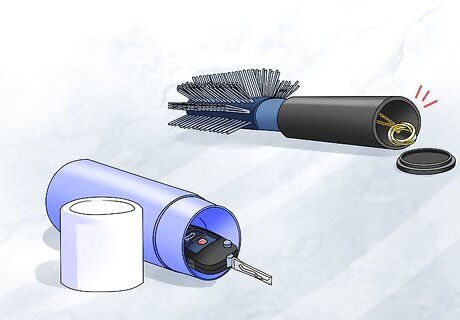
Use hollow bottles to hide items around your home. Pill containers, empty lip balm tubes, empty shaving cream containers, and deodorant containers are great for small items. Slide your valuables inside, and keep the labels on to disguise them. Put the bottles back into your bathroom or closet so they don’t look suspicious. If you have a hairbrush, pop the handle off to see if it’s hollow. If it is, slide your valuables inside. The downside of using common items like these is that they could get lost or thrown away. Keep an eye on where you put your valuables to make sure they don’t disappear.
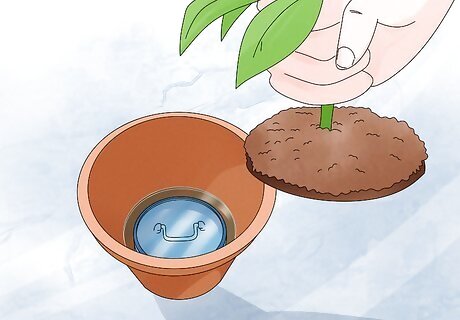
Put your valuables in a false bottom of a plant pot or purse. Stick your valuables at the bottom of an empty plant pot, purse, or trash can. Slide a piece of plastic or plexiglass on top to keep the valuables safe, then cover the false bottom with stuff (soil for plants, keys and wallet for a purse, and a trash bag for a trash can). Always take note of where your false bottoms are in your home. If you get rid of the item with a false bottom, you could lose your valuables forever.
Adapting Furniture and Fittings
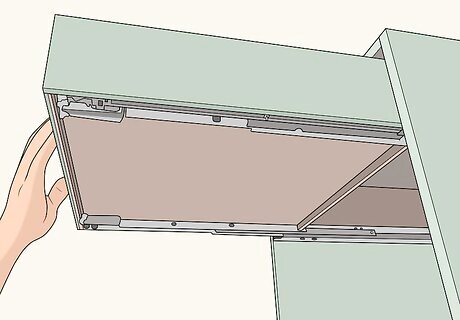
Tape valuables to the underside of drawers. Take a drawer out of your dresser or desk and attach an envelope of valuables to the underside with tape. While this won’t conceal your items if the burglar takes the whole drawer out, it will deter them if they just slide the drawers open. You could also slide an envelope full of valuables behind the drawers to keep it safe.
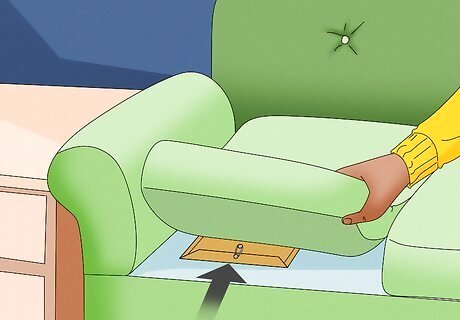
Slip envelopes into empty spaces in your furniture. Try using the space between couch cushions, the crack of a cabinet, or inside a sliding table compartment. Use tape if you’re worried about your valuables falling down or getting lost. Keep in mind that some burglars know that they should look inside furniture, so this may not be the most effective option. There is a chance that small valuables could get lost inside a large piece of furniture, so use this method with caution.
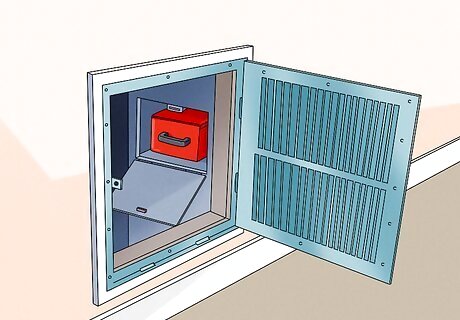
Hide valuables inside an electronic panel. Take a look at your TV, computer, air vent, garage door automation box, or even your thermostat. Use a screwdriver to take off the top panel, then slide small valuables inside before replacing it. Some burglars will steal electronics just because they’re electronics. If you have a brand-new TV or computer, it’s probably not the best spot to keep valuables. Always use caution when fiddling with electronic items, and read the manufacturer’s guide before opening anything up.
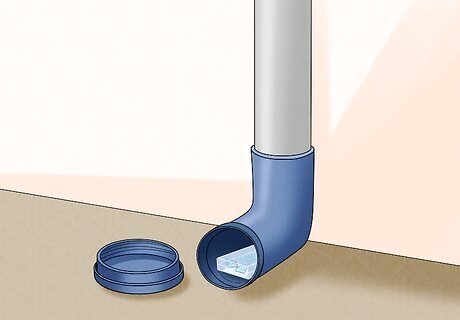
Install a fake drain pipe to hide items in plain sight. Connect a length of PVC pipe from the floor to the ceiling in your basement. Use the pipe to stash your valuables in layers of plastic bags. Never store your valuables in a real drain pipe! You should only use this method if you can put a fake pipe in your home without connecting it to a water source.
Using Everyday Mundane Items
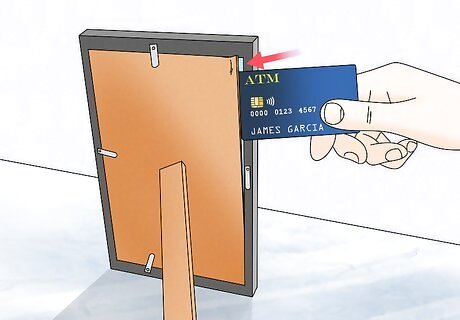
Slide cash and documents inside of picture frames. Take the back off your picture frame and put any paper-thin valuables behind the photo. Attach the backing onto your fame before hanging it on the wall again. Although it might be tempting, don’t just tape your valuables to the outside of picture frames! Burglars often check the backs of frames for documents.
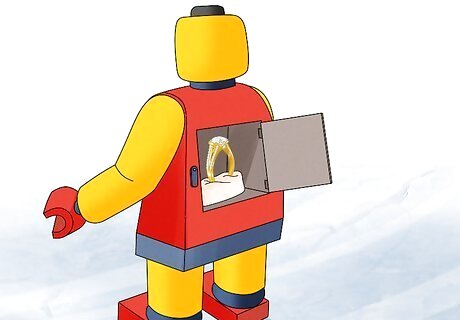
Put small items inside a toy or toy box. Small wooden toys are perfect for hiding jewelry or cash. Keep your items with your child’s toys so they’ll be passed over if a burglar comes through. If your kids stumble upon valuable items while they’re playing, they might think it’s Christmas come early. Either let your child know what you’re doing so they leave the valuables alone, or take your valuables out as soon as you’re back from a trip or vacation.
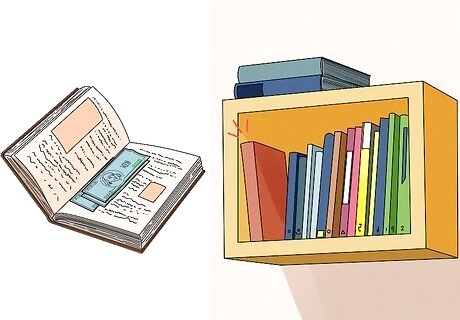
Store money inside of books. Simply slide cash or checks inside the pages of a book and place it back on your bookshelf. If you have a lot of books, this is a good way to disguise your valuables. However, this is also an easy way to forget where your valuables are and donate or get rid of the book. Be cautious with this method, and write down the name of the book if you need to.
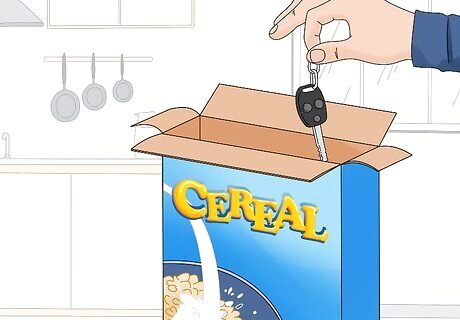
Hide valuables in rice or cereal boxes to throw burglars off. Store your keys, jewelry, or cash inside of food boxes to make sure they’re never found. If you’re worried about them getting dusty, wrap your valuables in plastic first. Burglars are extremely unlikely to go through your food pantry, which is what makes this hiding spot so good.
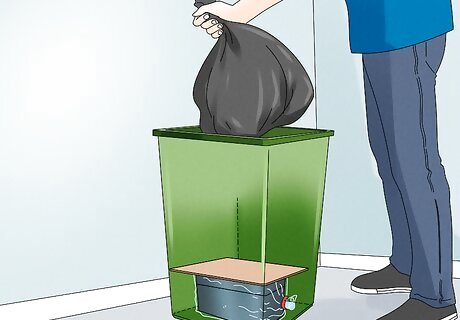
Make your hiding spot undesirable by using the trash can. Wrap your valuables in plastic wrap, then put them in your trash bin underneath the bag. Burglars are very unlikely to dump out your trash, especially if they’re going quickly. Keep in mind that this ups the chance of your valuables getting thrown away accidentally. If you do use this method, you may want to warn everyone in your home so they don’t accidentally get rid of your valuable items or important documents.
Keeping a Safe
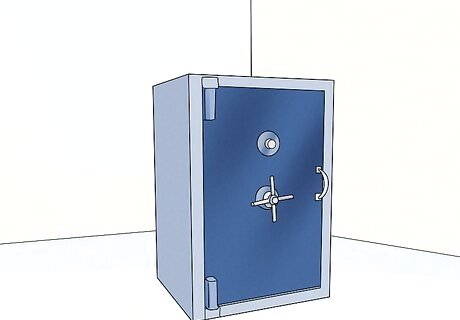
Choose a steel safe that’s at least ⁄4 in (0.64 cm) thick. This will make it resistant to thievery and fire/water damage. If you’re going for a small safe, it’s super important that the walls are thick so it’s impervious to damage. Try to choose a safe that’s a little bit larger than you think you’ll need. That way, you have extra room for more important valuables.
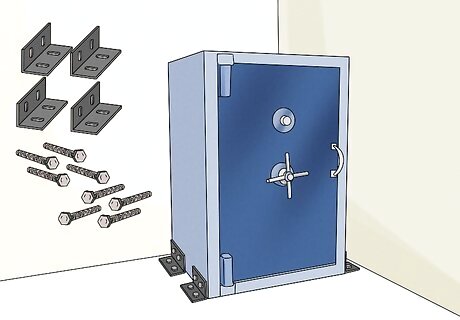
Use a bolt-down kit to secure your safe to the floor. Small safes are easy to pick up and steal. Make sure your safe is bolted down to the floor so burglars can’t walk away with all your important items. If you can lift and carry your safe, so can a burglar.
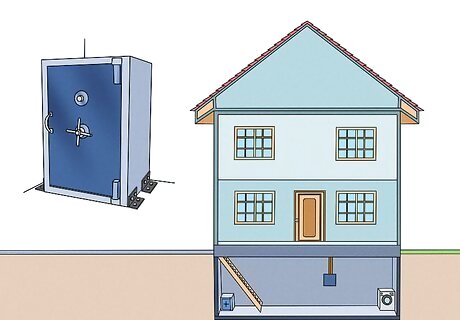
Keep your safe out of the master bedroom. Since this is the first stop on a burglar’s list, they’ll probably find your safe right away. Instead, try keeping it in the basement or the attic where a burglar is less likely to go. If flooding is a problem in your area, pick the attic instead of the basement.
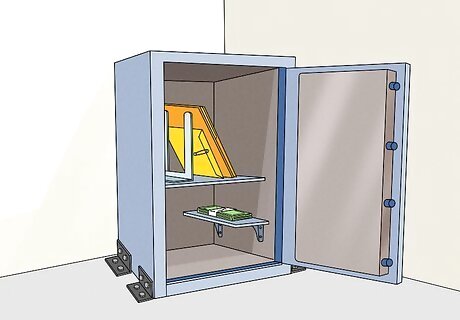
Store your documents inside the safe. While you can put anything you’d like into your safe, they’re usually great for keeping documents that you’d hate to lose in an emergency. This includes birth/death certificates, passports, deeds, and estate-planning documents. If you have anything that would be hard to replace, you should put it in your safe.
Protecting Your Valuables and Yourself
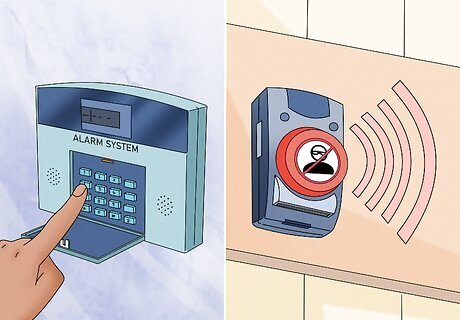
Set up a home security system to sound an alarm if burglars strike. You can purchase a home security system with a code that will alert the police in case of a break-in. Get a professional to come and install one in your home, and leave it on 24/7. Having a dog at home can also help with that, as most burglars will think twice before entering a house with a barking dog. The cost of an alarm system depends on the size of your home and which services you’d like included.
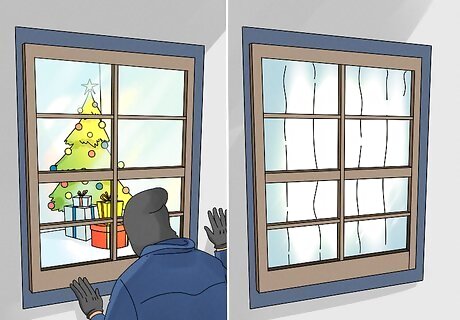
Hide your valuables from sight. If people can see inside of your home from the street, tuck any valuables away so they aren’t visible from the windows. This is an easy way to deter criminals and trick them into thinking you don’t have anything valuable. This includes Christmas gifts, even if they’re wrapped!
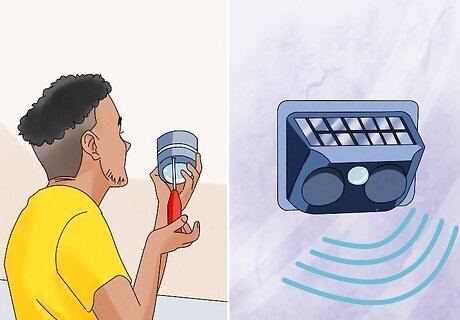
Place cameras and motion lights outside your home to catch burglars. If your home does get burgled, you can give the footage from a security camera to the police. Set up two to three cameras pointing away from your home to catch all angles, and make sure there aren’t any major blind spots. Sometimes motion sensor lights or visible fake cameras are enough to deter burglars before they even enter your home.
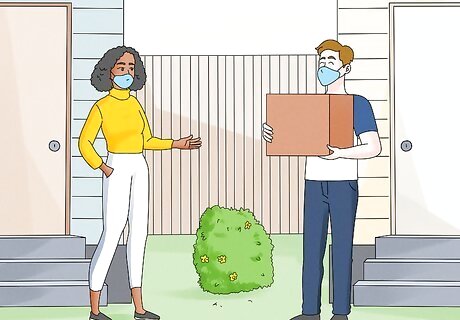
Have your neighbors bring packages inside when you’re away. If you’re going on vacation and you get a package, it could sit outside your door for days. This is an easy way to tell that no one is home, and a burglar could use this opportunity to strike. Burglars also might just take the package if it looks valuable enough.
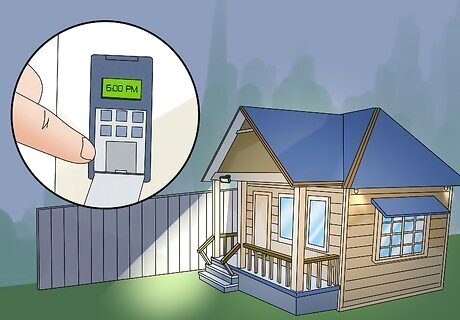
Put your lights on a timer when you’re not home. If you’re going to be away for a long time, have your lights turn on when it’s dark out and turn off when it’s light. This could trick burglars into thinking someone is still there when you’re gone. You can buy timer switches from most home goods or hardware stores. If you have smart lights, you could even turn them on and off from an app on your phone.

Leave valuables with your neighbors or a friend if you go out of town. The best way to keep your important items safe is to leave them with someone you trust. Gather your important documents, jewelry, or cash, and hand them off to a friend until you get home. Make sure it’s a friend you trust!

















Comments
0 comment